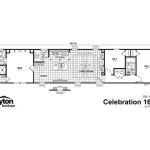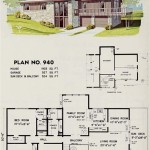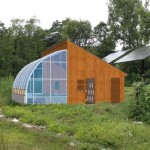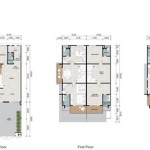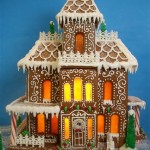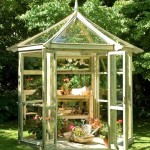Heritage Style House Plans: A Guide to Timeless Architecture
Heritage style house plans evoke a sense of history and tradition, incorporating architectural elements from bygone eras. These plans offer a unique blend of classic aesthetics and modern functionality, appealing to homeowners who appreciate timeless design. This article explores the various facets of heritage style house plans, providing insights into their characteristics, popular styles, and considerations for building.
Key Characteristics of Heritage Style House Plans
Several key features distinguish heritage style house plans from contemporary designs. Recognizing these elements helps in identifying and appreciating the nuances of this architectural style.
1.
Emphasis on Symmetry and Balance:
Heritage homes often feature symmetrical facades, balanced window placement, and evenly distributed architectural details. This creates a sense of order and harmony.2.
Decorative Trim and Molding:
Intricate trim work, including cornices, crown molding, and window casings, is a hallmark of heritage styles. These details add visual interest and enhance the overall aesthetic.3.
Steeply Pitched Roofs:
Many heritage homes feature steeply pitched roofs, often with gables and dormers. These rooflines contribute to the classic look and can provide additional attic space.4.
Porches and Verandas:
Expansive porches and verandas are common features, offering outdoor living spaces and enhancing curb appeal. These spaces often feature decorative columns and railings.5.
High-Quality Materials:
Traditional materials such as brick, stone, and wood are frequently used in heritage homes, emphasizing durability and craftsmanship.6.
Large Windows:
Generously sized windows allow ample natural light and provide views of the surrounding landscape. These windows often feature divided lights or decorative patterns.Popular Heritage House Styles
Numerous architectural styles fall under the umbrella of heritage homes. Each style possesses distinct characteristics, reflecting the architectural trends of its respective era. Some of the most popular styles include:
1.
Victorian:
Characterized by ornate details, intricate gingerbread trim, bay windows, and turrets.2.
Colonial:
Known for symmetrical facades, multi-paned windows, and simple, elegant lines. Sub-styles include Georgian, Dutch Colonial, and Cape Cod.3.
Craftsman:
Featuring low-pitched roofs, exposed rafters, wide eaves, and handcrafted details.4.
Tudor:
Distinguished by steeply pitched roofs, decorative half-timbering, and prominent chimneys.5.
Farmhouse:
Emphasizing practicality and simplicity, with large porches, gabled roofs, and board-and-batten siding.Considerations for Building a Heritage Style Home
Building a heritage style home requires careful planning and consideration of various factors. Addressing these points ensures a successful project that respects the architectural style.
1.
Choosing the Right Plan:
Selecting a plan that fits the site and desired aesthetic is crucial. Consider the size, layout, and architectural details.2.
Finding a Qualified Builder:
Working with an experienced builder familiar with heritage construction techniques is essential for achieving authentic results.3.
Budgeting for Materials and Labor:
Heritage homes often involve specialized materials and craftsmanship, which can impact the overall budget.4.
Understanding Local Building Codes:
Ensure the chosen plan complies with local building codes and regulations.5.
Selecting Appropriate Landscaping:
Landscaping should complement the architectural style of the home, creating a cohesive and visually appealing environment.Adapting Heritage Plans for Modern Living
While heritage style house plans embrace traditional aesthetics, they can be adapted to suit modern lifestyles. These adaptations allow homeowners to enjoy the charm of a historic home with the conveniences of contemporary living.
1.
Open Floor Plans:
Modifying interior layouts to create open floor plans can enhance flow and functionality while preserving the exterior character.2.
Energy Efficiency:
Incorporating energy-efficient features such as insulation, windows, and appliances reduces environmental impact and operating costs.3.
Smart Home Technology:
Integrating smart home technology allows for automation and control of various systems, enhancing convenience and security.Finding Heritage House Plans
Numerous resources are available for finding heritage house plans. Exploring these options helps in identifying the perfect plan for individual needs and preferences.
1.
Online Plan Databases:
Online platforms offer a vast selection of plans from various architects and designers.2.
Architectural Firms:
Working with an architectural firm allows for customization and personalized design services.3.
Historical Societies:
Local historical societies can provide resources and information on historically accurate plans.The Enduring Appeal of Heritage Homes
Heritage style house plans offer a timeless appeal that transcends fleeting trends. Their classic aesthetics, enduring craftsmanship, and connection to the past continue to resonate with homeowners seeking character and charm.

29 Heritage Homes Floor Plans Ideas House

29 Heritage Homes Floor Plans Ideas House

2 Story Craftsman Style House Plan Heritage Heights Family Plans

Olde Heritage Manor House Floor Plan Frank Betz Associates

Historic Floor Colonial Style House Plans

Traditional Neighborhood Designed House Plans Tnd

P609 Heritage Project For Mr Heer Singh Ji Surana Jalore Rajasthan Small House Design Exterior Modern Bungalow Craftsman Style Plans
Feast Your Eyes On These Architectural Residential Drawings Of The Past Architect

House Plan 5342 Old Chancellor Heritage

Heritage House Plan

